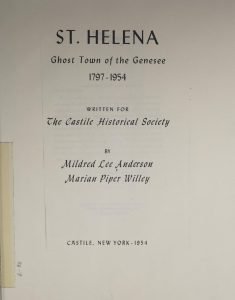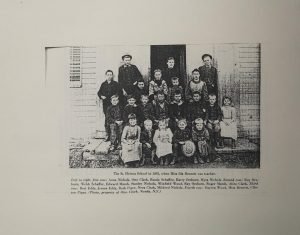Social Activity in St. Helena, New York
The little village’s ministers were paid a small salary and by donations. The February 14, 1879, Castilian states that a very successful “donation” was held at the St. Helena schoolhouse. The goodly sum of seventy-five dollars was raised for Rev. Campbell. Well done for so small a community! The donation was an annual event, held in the schoolhouse on an autumn evening when the harvest was in. The gifts were all kinds of fruits, vegetables, meat, baked goods, and money. The affair was such a social success that the guests generally ate many of the donations! The older people visited … Read more


